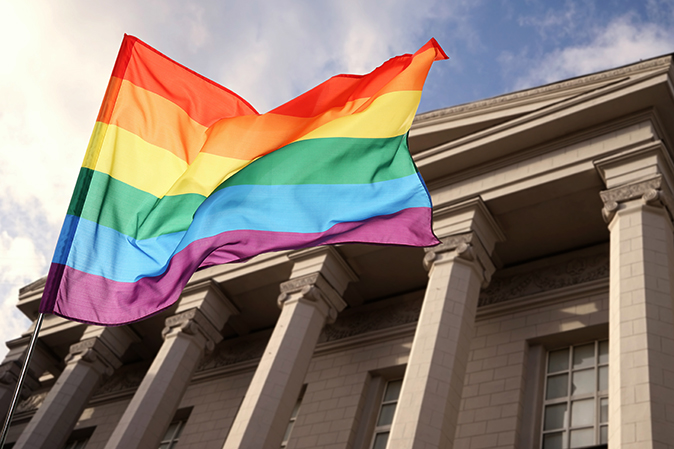Thank you!
The full article is available below.
You will also receive a follow-up email containing a link so you can come back to it later.

The LGBTQ movement in America dates back at least as far as the 1920s, when the first documented gay rights organization was founded. The Society for Human Rights only survived for about a year before it was disbanded in 1925, but its mark was left on our country.
Increased visibility and activism of LGBTQ individuals since the 1970s has helped the movement make progress on multiple fronts. Just as advocates fought their battle in American culture, they also did so in the courts. Here, we look at a few cases that have shaped LGBTQ rights in America and celebrate some of the milestones of the movement.
1) 1958 One, Inc. v. Olesen
The first Supreme Court case to consider LGBTQ rights had to do with the First Amendment right to freedom of speech. A publisher released ONE: The Homosexual Magazine, America’s first widely-distributed magazine for gay readers. Not long after publication began, its August and October editions were seized by Los Angeles postmaster Otto Olesen for supposedly violating obscenity laws. In its decision, the Supreme Court tossed out a lower court’s ruling and sided with One, Inc. SCOTUS established that material aimed at a gay audience was not inherently obscene.
2) 1962 Richards v. U.S. Tennis Association
The New York Supreme Court ruled that transgender woman Dr. Renée Richards could play at the U.S. Open tennis tournament as a woman. The court rejected the United States Tennis Association’s requirement that in order to be eligible to participate in the tournament, the plaintiff had to pass a sex-chromatin test. The court went on to state that the test could not be used for the purpose of excluding individuals from sports events on the basis of gender.
3) 1996 Romer v. Evans
The case revolved around an amendment to a Colorado law, which banned cities from passing anti-discrimination laws that would protect gay and bisexual people. The Supreme Court, however, recognized for the first time that carving LGBTQ people out of protections that everybody else could have access to under the Equal Protection Clause of the Fourteenth Amendment violated their basic rights.
4) 1998 Oncale v. Sundowner Offshore Services, Inc.
The plaintiff in this case, who was employed as part of crew on an offshore oil rig, claimed that he was forcibly subjected to sex-related actions against him by certain coworkers. SCOTUS ruled that same-sex harassment is covered under Title VII of the Civil Rights Act of 1964, which prohibits workplace discrimination on the basis of sex, race, color, national origin and religion.
5) 2003 Lawrence v. Texas
In a landmark ruling, the Supreme Court eliminated sodomy laws by overruling Bowers v. Hardwick with a vote of 6-3. Justice Kennedy delivered the opinion, saying that the due process clause of the Fourteenth Amendment gave the petitioners “the full right to engage in private conduct without government intervention.”
6) 2013 United States v. Windsor
This case was one of the major precursors to marriage equality and considered the situation of Edith Windsor and Thea Spyer, who were married in Canada before moving to New York, a state that recognized their marriage. After Spyer passed away, Windsor attempted to claim a tax exemption for surviving spouses — only to be blocked by the Defense of Marriage Act.
The Supreme Court ruled that DOMA violates due process and equal protection principles, and ordered the United States to refund Windsor’s taxes. The Court also decided to eliminate the portion of DOMA that defined marriage as a “legal union between one man and one woman as husband and wife.”
7) 2015 Obergefell v. Hodges
A group of 14 same-sex couples and two men whose partners were deceased joined together and won one of the LGBTQ rights movement’s biggest victories: marriage. In a 5-4 vote, the Supreme Court found for the petitioners, who argued that state officials violated the Fourteenth Amendment’s equal protection clause by prohibiting them from marrying or not recognizing marriages performed in other states. The landmark case officially ruled state bans on same-sex marriage were unconstitutional, making gay marriage legal throughout the U.S.
Unlock the Full Article
Bring Your Goals Within ReachTell us a little about yourself and your goals to display the full article and gain access to more resources relevant to your needs.
Interested in reading more? Fill out the form to read the full article.